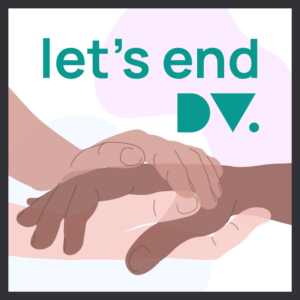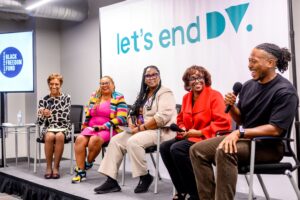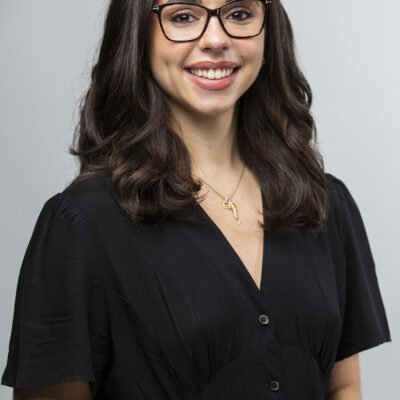
Last Spring, Emmy-nominated actor Jonathan Majors and his then-partner Grace Jabbari got into a domestic dispute that ended with Majors’ arrest. Shortly after the case made headlines a firestorm of online debate ensued. A groundswell of support grew for Majors—whose swift ascent to Hollywood stardom positioned him as an A-list celebrity—despite evidence of him assaulting and harassing Jabbari.
But last month, Majors was found guilty of misdemeanor assault and harassment. After his conviction, Marvel Studios and The Walt Disney Company–which cast Majors as the villain in “Ant-Man and the Wasp: Quantumania” and in the “Loki” series–dropped him from all future projects. The verdict, along with the announcement from Marvel Studios and The Walt Disney Company, intensified the scrutiny of Jabbari. In the eyes of the public, her claims cost Majors his career; she became the suspect, and he the victim.
Unfortunately, this is how conversations about domestic violence typically play out in the media. People pick sides in the aftermath of a domestic dispute, casting some people as villains but never stopping to unpack the circumstances that led to the behavior in the first place.
“If that is the extent of the conversation, then there really isn’t a lot of opportunity to prevent domestic violence, to heal from domestic violence, to learn more from each other,” said Rachael Kagan, Director of Communications and Public Affairs of Blue Shield of California Foundation, which has been working to end domestic violence since its founding in 2002. The foundation has been working to address the root causes of domestic violence–racism, gender and economic inequality–since 2018.
Recognizing that their grantees–organizations that work directly with people affected by domestic violence–have the expertise and insight needed to shift the conversation from what happens after the violence occurs to what we need to do to prevent it from happening at all, the foundation created a new communications campaign, “Let’s End DV.”
 Launched in October 2022, the central message of the campaign is that domestic violence is everywhere, but it is not inevitable–it’s healable and preventable. The highlight of the campaign is the recently released five-part podcast series, “Let’s End DV: Heal, Restore, Prevent,” hosted by journalist Bonnie Boswell.
Launched in October 2022, the central message of the campaign is that domestic violence is everywhere, but it is not inevitable–it’s healable and preventable. The highlight of the campaign is the recently released five-part podcast series, “Let’s End DV: Heal, Restore, Prevent,” hosted by journalist Bonnie Boswell.
The podcast, an idea that stemmed from the combined expertise of Kagan and Communications Officer Jenna Lane, and their colleagues, aims to reach people in the policy sphere. With the help of the foundation’s director of policy, Richard Thomason, among other leaders of domestic violence prevention, Kagan and Lane found that policy makers are often left wondering, “How exactly can I help?”
“Who better to answer that question than the grantees of our foundation who are on the ground doing that work in California communities of color,” Lane said.
This strategic shift for the foundation comes at a time of increased attention from the White House to address gender-based violence. Last year, the Biden administration released the U.S. National Plan to End Gender-Based Violence. It’s the first initiative of its kind spearheaded by any White House administration.
“Some of the significant parts of the plan are that there are seven pillars and the first pillar is prevention,” Kagan said. “That’s a first and a very big change in orientation. The first pillar is not enforcement or policing or criminal justice, although that is in the plan, of course, because reforms are needed there too.”
The foundation helped contribute to the White House plan, and is working on the state level to identify leaders and opportunities to help implement it. But it’s really that first pillar, prevention, that the foundation is focusing on.
The idea that DV is preventable is a running theme throughout the podcast. In Episode 1, grantees Sonya Young Aadam, CEO of the California Black Women’s Health Project, and Vanessa Perez, Executive Director of Time for Change Foundation, discuss multigenerational prevention efforts.
For years, the California Black Women’s Health Project has worked to improve the health of California’s Black women and girls through a sister circle model of engagement, an evidence-based practice of bringing Black women together to talk about personal experiences that contribute to trauma. Recognizing that preventing domestic violence requires engagement with men, Aadam’s organization recently established brother circles that center the experiences of Black men and boys.
“It has resulted in men now going out and the boys, the young boys, have gone through these circles, going out and then beginning to have open conversations with their family, with their friends, with their spheres of influence,” Aadam said on the podcast. “And that really is showing us that we’re going to change the narrative on this, the training of Black men and boys to be advocates and activists around violence prevention, in my view, is innovative. It is even revolutionary. And it is showing that Black men and boys are lifting up their voices.”
In Episode 3, Foundation Trustee Maricela Rios-Faust, CEO of past grantee Human Options–a nonprofit that provides support to survivors of domestic violence–and California State Sen. Susan Rubio discuss the intersection of domestic violence and housing insecurity, and their efforts to prevent these interconnected issues.
“When we think of and we focus and work on programs for housing and homelessness, we wanted specific populations to be included. So what [Senate Bill 914] did, really, it said if the state or federal government gives you funding to tackle [housing and homelessness] there has to be a component in which we look at this subgroup [people affected by domestic violence],” Rubio said. “We wanted to make sure that the response is specific to domestic violence victims, and that they are also included in the planning process.”
So far, the podcast has garnered positive responses from its niche listener audience and has also been a powerful tool for convening the foundation’s grantees.

“Some of the grantees who don’t really get other opportunities to interact were brought together just in the course of a recording session or preparing for that recording session; and sharing ideas and that kind of chemistry and energy, I would argue, is also an impact,” said Lane.
“We wanted to be able to very closely reflect our strategies, to include and uplift our grantees, and to target very specifically the audience that we wanted to reach.”
When asked to offer insight for fellow funders looking to launch a podcast or an innovative in-house communications campaign, Kagan said this:
“We would love for our colleagues to know that you too can express your values and strategies with an in-house communications project. Some of the things that helped us do that was to have a skilled team and clear goals to align with our strategy, build organizational support internally for the campaign and to outsource when necessary. Be ambitious, creative and sensitive.”
Listen to the podcast here, or wherever you get your podcasts.
